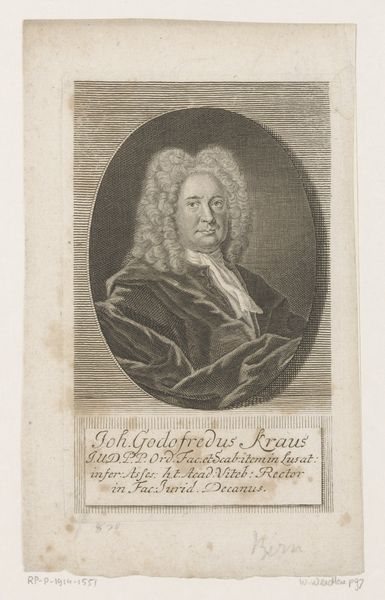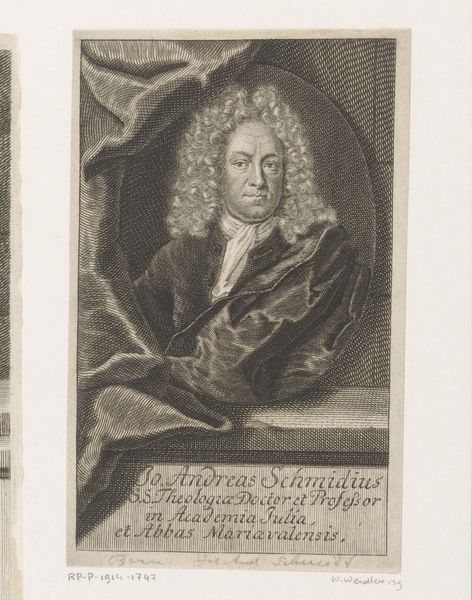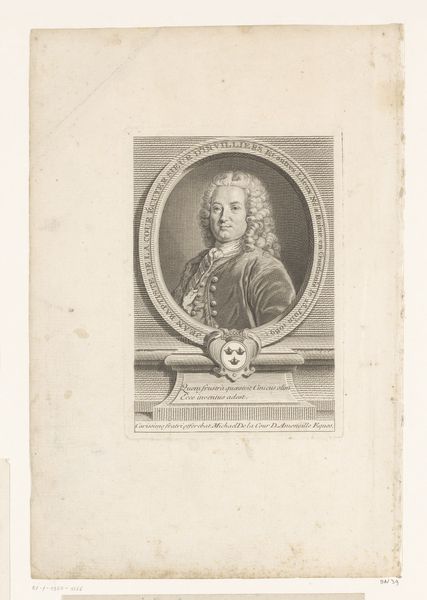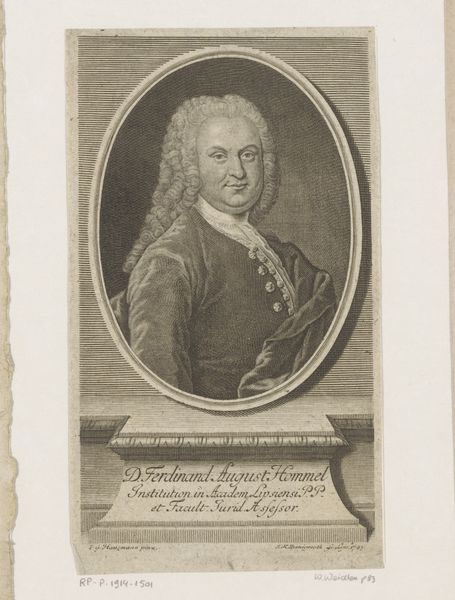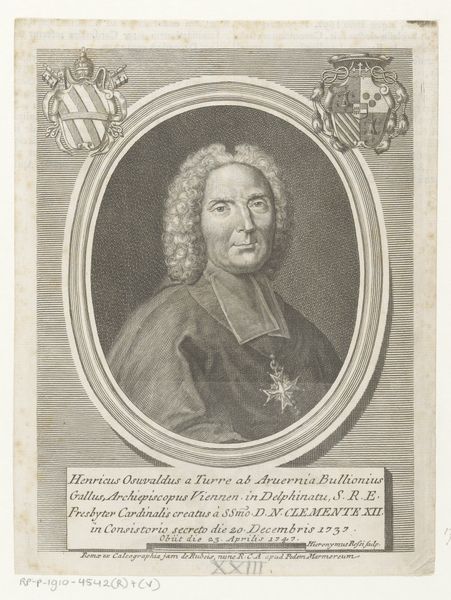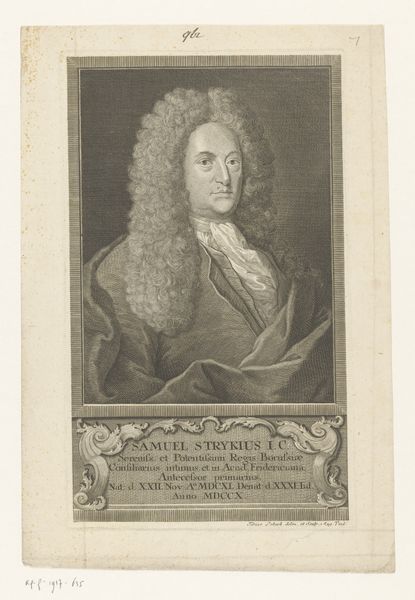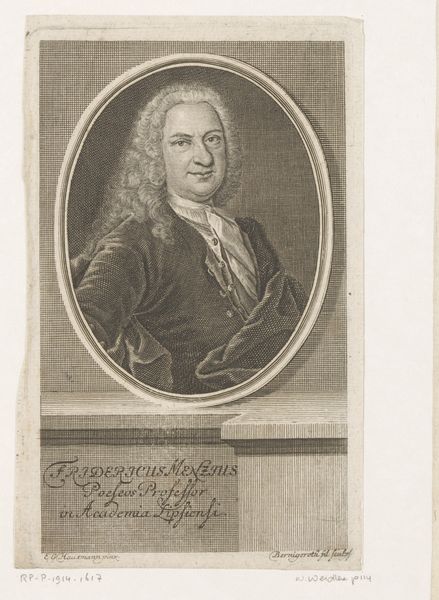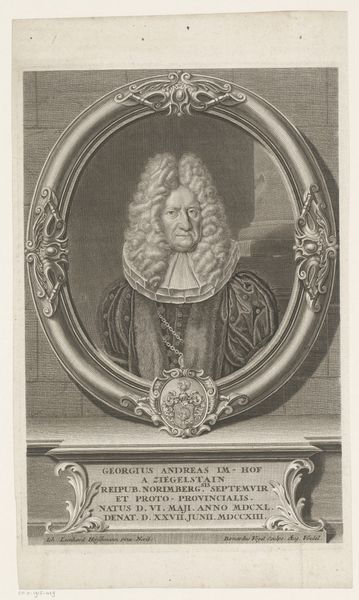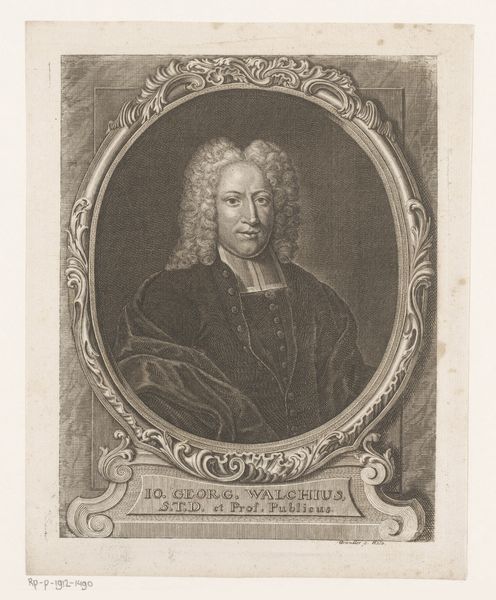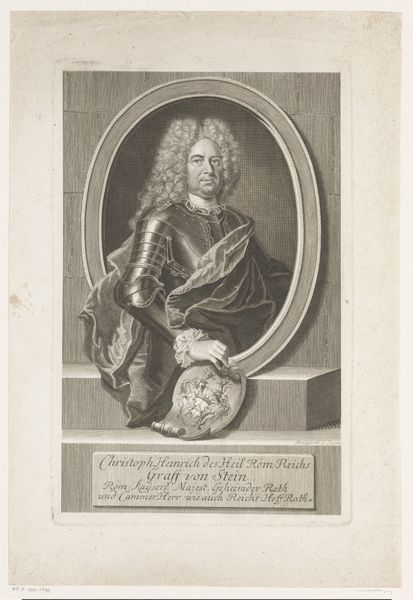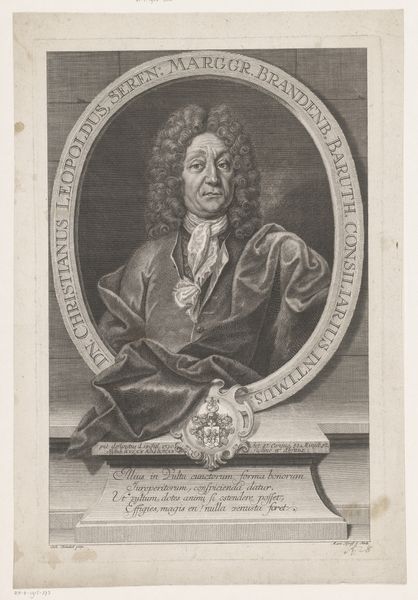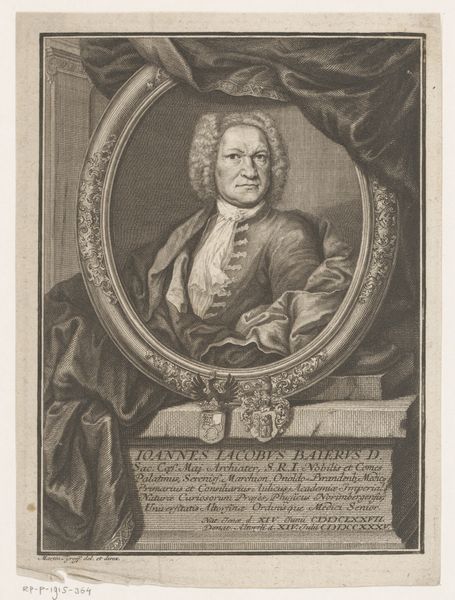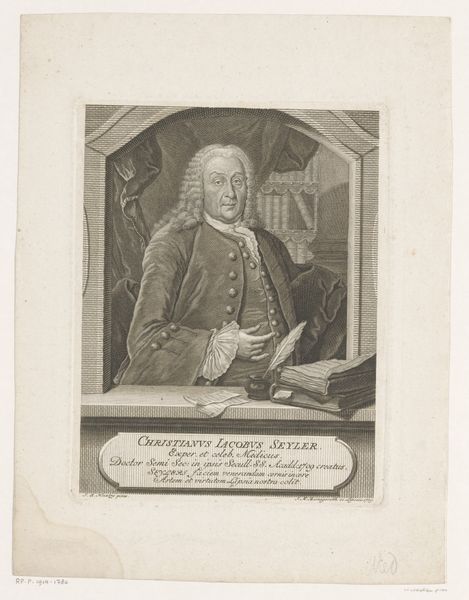
engraving
#
portrait
#
baroque
#
line
#
engraving
Dimensions: height 155 mm, width 94 mm
Copyright: Rijks Museum: Open Domain
Curator: Today, we’re looking at a piece called "Portret van André Cavard" by Johann Christian Püschel, dating from 1728 to 1771. It's an engraving. Editor: The intricacy of the line work immediately jumps out. It gives the portrait an almost ethereal quality, despite the formality of the subject. The frame is striking, the drapery softens the figure. Curator: Indeed. As an engraving, the lines are crucial. Think about the process: the labor-intensive act of etching, the tools used to create such fine detail, the social function of portraits in that era to project wealth and status... This wasn't just art; it was a commodity. Editor: And consider how those lines interact. The controlled chaos of the wig versus the precise rendering of the face…it directs the eye. Püschel used line variation to suggest depth and volume in a monochromatic field, to build a composition. Curator: It also speaks to the role of the engraver as a reproducer. Was Püschel merely copying another artist’s original, thereby amplifying their influence, or was he asserting his own artistry through his specific technique and choices? What was the distribution model? Who consumed these images, and what did they signify? Editor: I can see the influence of the Baroque with how Püschel employs drama, it heightens the overall emotional impact, wouldn’t you agree? The formal pose contrasts that slight smirk, almost flirting with the audience. Curator: I do find it fascinating that engravings made art more accessible. Prints like these democratized imagery. Now, a wider range of people could acquire portraits, fuelling social aspirations and impacting fashion trends in visual and material culture. Editor: Looking closely, notice the economy of lines—the implied textures achieved with such minimal mark-making! The engraver had an impeccable command of visual language. Curator: For me, this piece is about more than just its formal qualities or aesthetic appeal. It prompts questions about artistic agency, economic structures, and the interplay between creator, subject, and consumer within a specific historical context. Editor: Yes, its art that makes you really study the image to interpret not just the representation but also what went into bringing it into being. Thanks for shining some light on these less well known images.
Comments
No comments
Be the first to comment and join the conversation on the ultimate creative platform.
